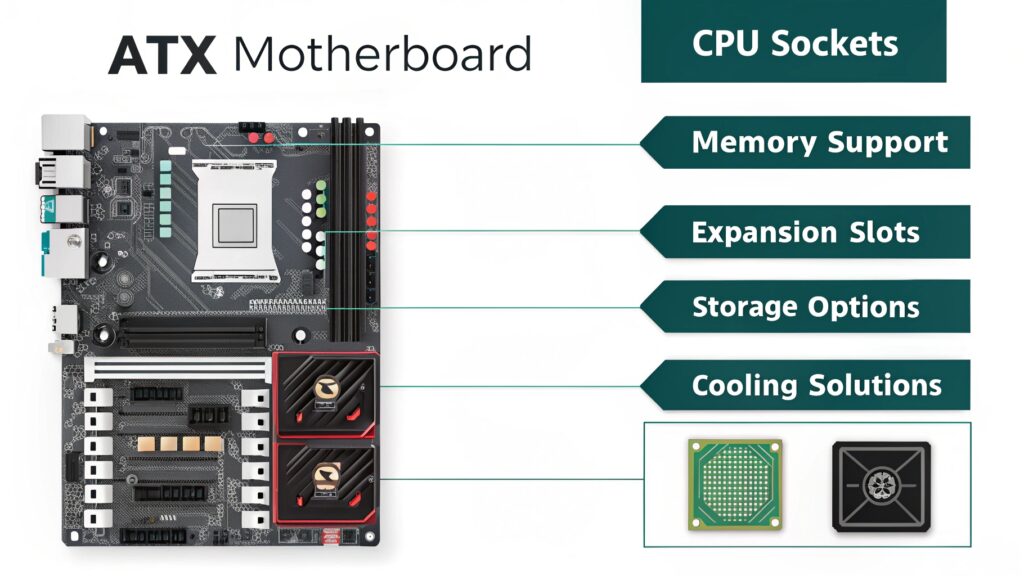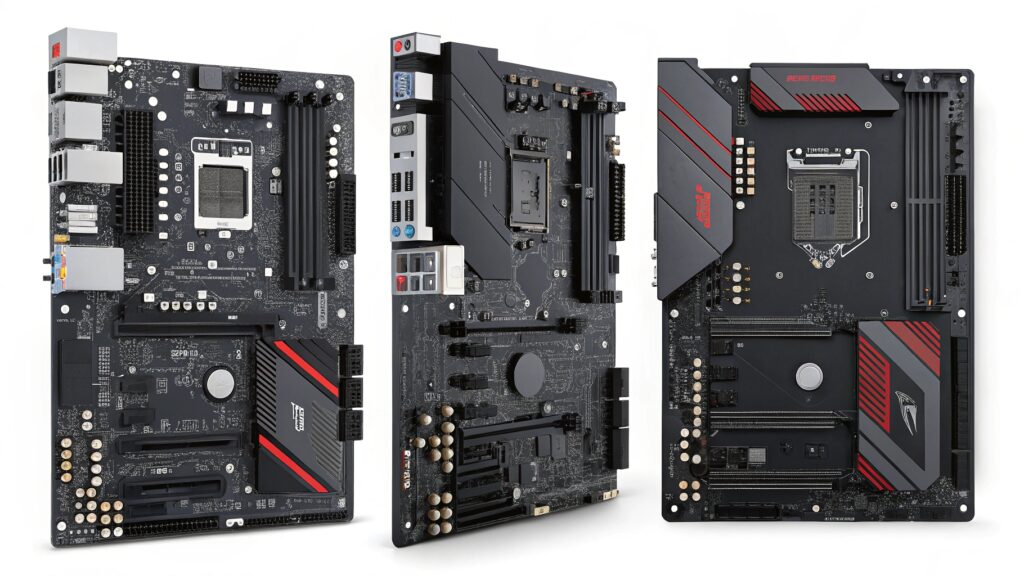Learn everything you need to know about the ATX form factor motherboard—its features, advantages, and how to choose the best one for your next PC build.
If you’re building a custom PC or upgrading your current system, the ATX form factor motherboard is likely one of your top contenders—and for good reason. As one of the most popular and versatile motherboard formats in the world, ATX strikes the perfect balance between size, expandability, and compatibility.
Whether you’re a gamer, content creator, or enthusiast, choosing the right motherboard is crucial. In this guide, we’ll explore what makes the ATX form factor so widely used, compare it with other form factors, and help you select the best ATX motherboard for your needs.
What is an ATX Form Factor Motherboard?
The ATX form factor, short for Advanced Technology eXtended, was introduced by Intel in 1995. It’s a standardized size and layout for motherboards, designed to improve airflow, expandability, and compatibility with a wide range of components.
ATX Motherboard Dimensions:
- Standard Size: 305 mm × 244 mm (12 in × 9.6 in)
Common Features of ATX Motherboards:
- Up to 7 expansion slots (for GPUs, sound cards, etc.)
- Support for multiple RAM slots (usually 4)
- Larger VRMs for better CPU power delivery
- Multiple SATA and M.2 slots
- Enhanced cooling and power features
Why Choose an ATX Form Factor Motherboard?
Excellent Expandability
ATX motherboards offer more PCIe slots, more RAM capacity, and better support for additional storage and cooling components compared to smaller form factors like micro-ATX or mini-ITX.
Great for Gaming and Content Creation
With support for multi-GPU setups, overclocking, and high-performance components, ATX is a go-to for gamers and creatives alike.
Widely Compatible with Cases and Components
Most mid-tower and full-tower PC cases are designed with ATX motherboards in mind. You’ll have no trouble finding compatible hardware, power supplies, and accessories.
Better Heat Management
Because of its larger surface area, an ATX motherboard allows better airflow and more room for advanced cooling solutions, making it ideal for performance-heavy tasks.
ATX vs Micro-ATX vs Mini-ITX

| Feature | ATX | Micro-ATX | Mini-ITX |
|---|---|---|---|
| Size | 305 x 244 mm | 244 x 244 mm | 170 x 170 mm |
| Expansion Slots | Up to 7 | Up to 4 | Usually 1 |
| RAM Slots | Up to 4 (or more) | Up to 4 | Typically 2 |
| Ideal For | Gaming, Workstations | Budget Builds, Home PCs | Compact PCs, HTPCs |
| Cooling Potential | High | Moderate | Low |
The ATX form factor motherboard offers the most versatility without the space constraints of smaller boards. If space isn’t an issue, ATX is typically the best choice.
Best Use Cases for ATX Motherboards
- Gaming PCs – Ideal for high-end graphics cards and fast memory
- Streaming Setups – More USB ports and expansion options
- Creative Workstations – Great for video editing, 3D rendering, and multitasking
- Overclocking and Custom Builds – More robust power delivery systems and BIOS features
Best ATX Form Factor Motherboards in 2025
Here are some of the top-rated ATX motherboards available now:
ASUS ROG Strix Z790-E Gaming WiFi
- Intel 12th/13th Gen CPU support
- PCIe 5.0 and DDR5 ready
- Advanced VRMs and heatsinks
- Built-in WiFi 6E and 2.5G LAN
MSI MAG B650 Tomahawk WiFi
- Designed for AMD Ryzen 7000 series
- PCIe 4.0 and DDR5 support
- Great thermal design
- Budget-friendly ATX option
Gigabyte X670 AORUS Master
- Premium AMD board with high-end features
- Dual PCIe 5.0 M.2 slots
- Excellent power design and BIOS
Each of these motherboards delivers excellent performance, future-proofing, and connectivity—all within the ATX standard.
Things to Consider When Choosing an ATX Motherboard

CPU Compatibility
Make sure the motherboard supports your Intel or AMD processor. Check socket type (e.g., LGA 1700, AM5) and chipset (e.g., Z790, B650).
RAM Support
Look for motherboards that support DDR5 (for future-ready builds) or DDR4 (for budget-friendliness). Also consider the max supported RAM capacity.
Connectivity
Look for features like:
- USB 3.2 Gen 2×2 or USB-C
- Thunderbolt (for creative workstations)
- WiFi 6/6E and Bluetooth
- 2.5G or 10G LAN ports
PCIe Slots
Make sure there are enough PCIe slots for your GPU, capture card, or sound card.
Cooling and Thermal Design
Check for VRM heatsinks, fan headers, and M.2 heat shields, especially if you’re building a gaming or overclocking rig.
FAQs
Is an ATX motherboard good for gaming?
Absolutely. An ATX form factor motherboard provides plenty of room for GPUs, cooling, and overclocking making it ideal for high-performance gaming builds.
Can an ATX motherboard fit in any PC case?
No. It will fit in mid-tower and full-tower cases, but not in mini-tower or small form factor (SFF) cases. Always check case specs before purchasing.
What is the main advantage of the ATX form factor?
The main advantage is expandability. With more slots, better cooling potential, and a robust feature set, ATX motherboards are ideal for power users and future upgrades.
What does ATX mean on a motherboard?
The Advanced Technology Extended form factor, or ATX, is the name of a specific motherboard and power supply specification that, when it was introduced in 1995, took older designs and created a more uniform, higher performance standard for the industry.
What is the difference between ATX and ITX and DTX?
DTX is a shorter version of ATX and micro-ATX, and Mini-DTX is a slightly longer version of Mini-ITX. Mini-ITX can have only one expansion slot, whereas Mini-DTX has the same width and can have two expansion slots.
Conclusion
If you’re looking for flexibility, power, and longevity in your PC build, the ATX form factor motherboard is a clear winner. It’s the gold standard for gamers, creators, and DIY enthusiasts who want a system that can grow and evolve with their needs.
From advanced cooling options to multi-GPU support and high-speed connectivity, ATX motherboards offer the features you need without compromising on space—provided you have the right case.
Also Read:
Fashion Institute of Technology: A Complete Guide to FIT’s Legacy, Education, and Future in 2025
Techysuper: The Ultimate Tech Resource Hub You’ve Been Searching For in 2025
Technoanis: The Ultimate Hub for Technology News, Reviews, and Digital Innovation
